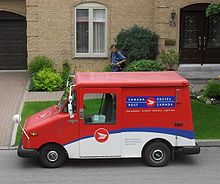
A van is a type of road vehicle used for transporting goods or people. Depending on the type of van, it can be bigger or smaller than a pickup truck and SUV, and bigger than a common car. There is some variation in the scope of the word across the different English-speaking countries. The smallest vans, microvans, are used for transporting either goods or people in tiny quantities. Mini MPVs, compact MPVs, and MPVs are all small vans usually used for transporting people in small quantities. Larger vans with passenger seats are used for institutional purposes, such as transporting students. Larger vans with only front seats are often used for business purposes, to carry goods and equipment. Specially equipped vans are used by television stations as mobile studios. Postal services and courier companies use large step vans to deliver packages.

The Grumman Aircraft Engineering Corporation, later Grumman Aerospace Corporation, was a 20th century American producer of military and civilian aircraft. Founded on December 6, 1929, by Leroy Grumman and his business partners, it merged in 1994 with Northrop Corporation to form Northrop Grumman.

The Grumman Long Life Vehicle (LLV) is an American light transport truck model, designed as a mail truck for the United States Postal Service, which has been its primary user since it first entered service in 1987, 37 years ago. It also was used by Canada Post. The LLV uses a chassis built by GM based on the S-10 with an aluminum body built by Grumman.
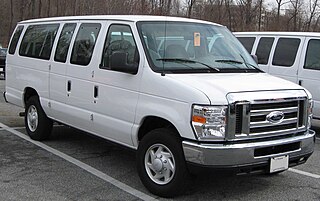
The Ford E-Series is a range of full-size vans manufactured and marketed by the Ford Motor Company. Introduced for 1961 as the replacement of the Ford F-Series panel van, four generations of the model line have been produced. Marketed for both cargo and passenger transport configurations, the E-Series has been designed with multiple design variations for both retail and commercial sale, including vans, and commercial-grade cutaway van chassis and stripped chassis.

The GAZelle is a series of light commercial vehicle—pickup trucks, vans and minibuses—made by Russian car manufacturer GAZ. At the time of the dissolution of the Soviet Union and transition to a market economy, the Russian automobile industry had not produced a much-demanded LCV similar to the Ford Transit or VW T4 class. The GAZelle shares many parts with the company's passenger cars ; in fact, models produced until 1998 had the same grille. Riga Autobus Factory, which formerly manufactured minibuses for the whole USSR, remained in Latvia, and now required its vehicles be sold to the now-foreign Russian market for hard currency. Responding to this market opportunity, GAZ swiftly developed its own LCV called GAZelle, which, taken together with its lighter version, Sobol, now account for the majority of the Russian van and light truck market and have strong positions in the markets of other CIS countries, ranking as GAZ's most popular and successful products.
The Wayne Corporation was an American manufacturer of buses and other vehicles under the "Wayne" marque. The corporate headquarters were in Richmond, Indiana, in Wayne County, Indiana. During the middle 20th century, Wayne served as a leading producer of school buses in North America.
Bedford Vehicles, usually shortened to just Bedford, was a brand of vehicle manufactured by Vauxhall Motors, then a subsidiary of multinational corporation General Motors. Established in April 1931, Bedford Vehicles was set up to build commercial vehicles. The company was a leading international lorry brand, with substantial export sales of light, medium, and heavy lorries throughout the world.

Cutaway van chassis are used by second stage manufacturers for a wide range of completed motor vehicles. Especially popular in the United States, they are usually based upon incomplete vans to be bigger or smaller than pickup trucks and SUVs made by manufacturers such as Chrysler, Ford, and General Motors which are generally equipped with heavier duty components than most of their complete products. To these incomplete vehicles, a second stage manufacturer adds specific equipment and completes the vehicle. Common applications of this type of vehicle design and manufacturing includes small trucks, school buses, recreational vehicles, minibuses, and ambulances. The term "cutaway" can be somewhat of a misnomer in most of the vehicle's context since it refers to truck bodies for heavy-duty commercial-grade applications sharing a common truck chassis.

Karrier was a British marque of motorised municipal appliances and light commercial vehicles and trolley buses manufactured at Karrier Works, Huddersfield, West Yorkshire, by Clayton and Co., Huddersfield, Limited. They began making Karrier motor vehicles in 1908 in Queen Street South, Huddersfield. In 1920, H.F. Clayton sold Clayton and Co's Huddersfield business into public listed company Karrier Motors while keeping their Penistone operation separate. Mechanical and electrical engineers Clayton & Co Penistone, remain active in 2020 as Clayton Penistone Group.
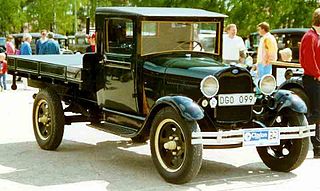
Ford Model AA is a truck from Ford. As the Model T and TT became obsolete and needed to be replaced, Henry Ford began initial designs on the Model A and Model AA in 1926. Basic chassis layout was done rapidly and mechanical development was moved forward quickly. Body design and style was developed and then outsourced to various body manufacturers, including Briggs and Murray. The designs of the Model A shared parts and materials with the Model AA Ford, notably the body, engine and interior. The AA usually received plainer interiors than their car counterparts. The Model AA followed similar design changes to the Model A during the AA's four years in production, often delayed anywhere from three to nine months. The mechanical changes and upgrades were done during production of the vehicles. Body changes that occurred between 1929 and 1930 were also integrated into AA production, but leftover parts were used longer in the heavy commercial trucks.
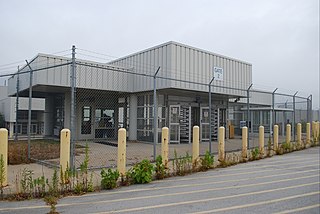
Moraine Assembly was a General Motors automobile factory in Moraine, Ohio, United States, a suburb of Dayton. A Frigidaire appliance plant had originally operated on the site from 1951 to 1979. Starting in 1981, the Chevrolet S-10 small pickup was produced. This same model was produced by Shreveport Assembly. In 1987 through 1994 the plant produced the rolling chassis for the Grumman LLV Postal Vehicle. From 2001 through 2008, the plant produced the GMT360 SUVs. The plant was closed in December 2008. In 2014, the facilities were acquired by Fuyao Glass to produce glass for vehicles.
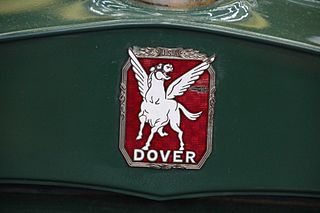
Dover was a make of trucks, owned by the Hudson Motor Car Company of Detroit, Michigan. Hudson announced the Dover brand in July 1929 as "Dover, built by Hudson Motors."

The Ford Thames 400E is a commercial vehicle that was made by Ford UK and introduced in 1957. Production of the range continued until September 1965, by which time a total of 187,000 had been built. Publicity for the model included hiring the Cy Laurie band to make the promotional film short 'Band Wagon', in 1958, preserved in the 'Ford Film and Video Collection' at the National Motor Museum, Beaulieu
Morgan Olson is an American company that produces aluminum walk-in step vans. It was founded in 1946 on Long Island, New York. Previously owned by Northrop Grumman and doing business as Grumman Olson for several decades, the company was then taken over by a group of senior managers. In 2003, Grumman Olson was purchased by the American company JBPCO, who also owned Morgan Corp., the then-largest manufacturer of truck bodies in the United States. Grumman Olson was renamed Morgan Olson in 2004.
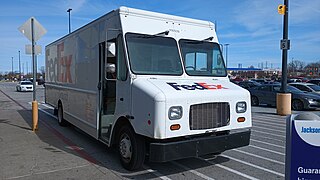
A multi-stop truck is a type of commercial vehicle designed to make multiple deliveries or stops, with easy access to the transported cargo held in the rear. They are usually vans or trucks designed to be used as fleet vehicles by businesses within local areas. They typically use commercial truck chassis with a generally larger, taller body and sometimes also a longer or shorter wheelbase. Though they have traditionally been powered by internal combustion engines, into the 21st century many multi-stop trucks have begun shifting to electric truck platforms.

Enova Systems was a United States corporation which designed and supplied battery electric vehicle powertrains and components. The company was founded initially as Clover Solar Corporation on July 30, 1976, in Santa Rosa, California, and changed its name to Solar Electric Engineering in June 1979.
Workhorse Group Incorporated, originally AMP Electric Vehicles, is an original equipment manufacturer and technology company headquartered in Sharonville, Ohio, U.S. Workhorse makes electric delivery vans, drones, and telematics software designed for last-mile delivery. Their products include commercial electric vehicles, Horsefly delivery drones, and a Metron telematics software system.

The OshkoshNext Generation Delivery Vehicle (NGDV) will be a mail truck for the United States Postal Service (USPS). The contract award, made to Oshkosh Defense, a wholly-owned subsidiary of Oshkosh Corporation, in February 2021, is valued at $6 billion. Up to 160,000 vehicles will be built in a new facility. Four variants of the NGDV are expected to be in fleet use: both gasoline-powered and battery-electric, driving either the front wheels or all four wheels. The USPS will begin to receive the vehicles in June 2024.

The Workhorse C-Series was an American line of battery electric medium-duty delivery vans built by Workhorse Group for commercial package delivery company fleets, which entered limited production in 2021, were recalled that September, and were discontinued in 2022 after fewer than fifty were built. The C-Series was originally named the N-GEN when the line was first announced in 2017. N-GEN prototypes began testing in 2018 and were renamed to the C-Series in 2019.

The Ford-Utilimaster Flexible Fuel Vehicle is an American light transport truck model, designed as a mail truck for the United States Postal Service (USPS), which is its primary user. It was built as a partnership between Ford Motor Company, which supplied a stripped-down, right-hand drive Ford Explorer chassis and drivetrain, and Utilimaster, which built the aluminum body and integrated it with the chassis. The FFV can operate with either unleaded gasoline or E85 ethanol-blended fuel using the Ford 4.0 L Cologne OHV V6 engine.


